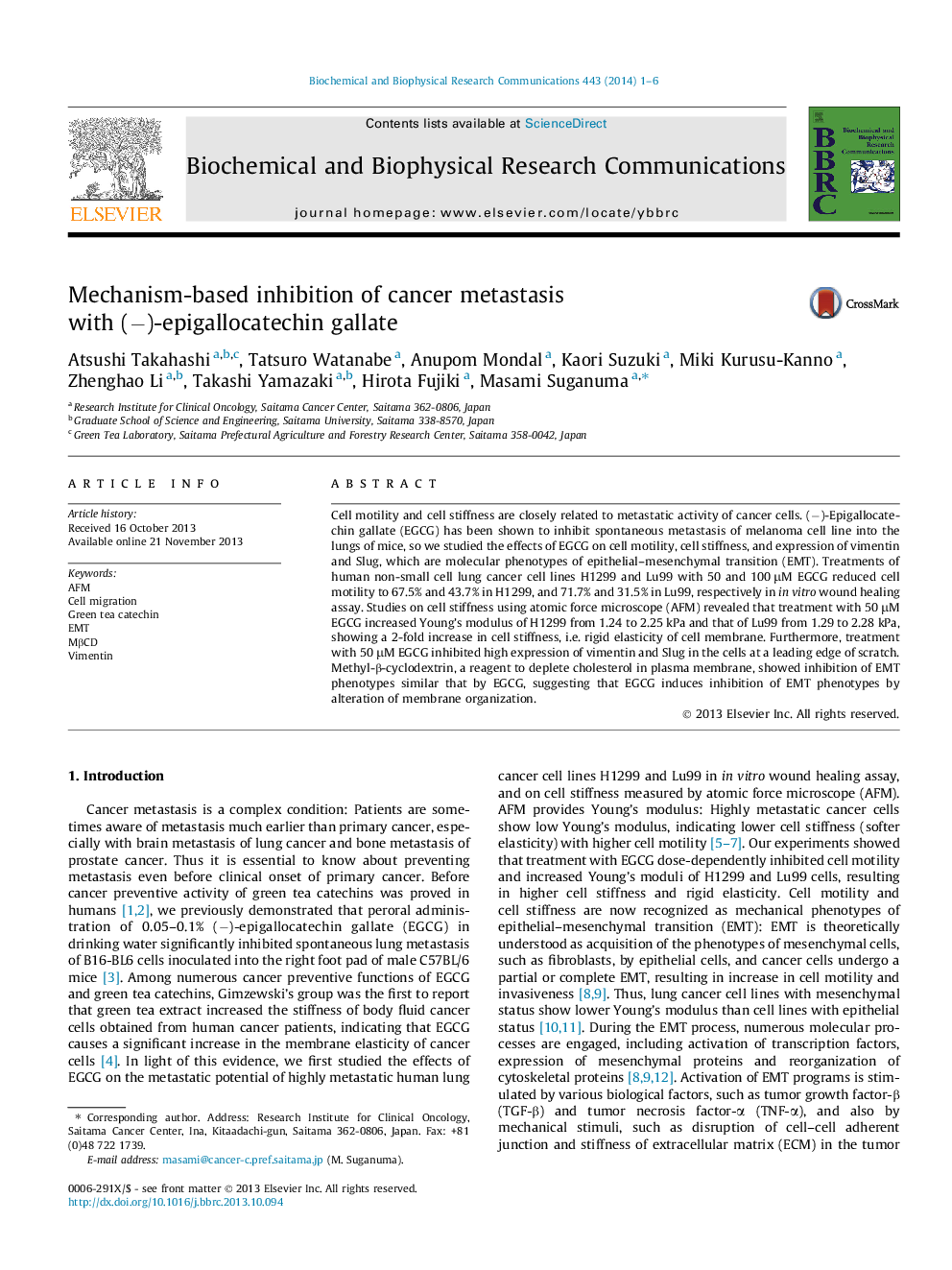| Article ID | Journal | Published Year | Pages | File Type |
|---|---|---|---|---|
| 10757331 | Biochemical and Biophysical Research Communications | 2014 | 6 Pages |
Abstract
Cell motility and cell stiffness are closely related to metastatic activity of cancer cells. (â)-Epigallocatechin gallate (EGCG) has been shown to inhibit spontaneous metastasis of melanoma cell line into the lungs of mice, so we studied the effects of EGCG on cell motility, cell stiffness, and expression of vimentin and Slug, which are molecular phenotypes of epithelial-mesenchymal transition (EMT). Treatments of human non-small cell lung cancer cell lines H1299 and Lu99 with 50 and 100 μM EGCG reduced cell motility to 67.5% and 43.7% in H1299, and 71.7% and 31.5% in Lu99, respectively in in vitro wound healing assay. Studies on cell stiffness using atomic force microscope (AFM) revealed that treatment with 50 μM EGCG increased Young's modulus of H1299 from 1.24 to 2.25 kPa and that of Lu99 from 1.29 to 2.28 kPa, showing a 2-fold increase in cell stiffness, i.e. rigid elasticity of cell membrane. Furthermore, treatment with 50 μM EGCG inhibited high expression of vimentin and Slug in the cells at a leading edge of scratch. Methyl-β-cyclodextrin, a reagent to deplete cholesterol in plasma membrane, showed inhibition of EMT phenotypes similar that by EGCG, suggesting that EGCG induces inhibition of EMT phenotypes by alteration of membrane organization.
Related Topics
Life Sciences
Biochemistry, Genetics and Molecular Biology
Biochemistry
Authors
Atsushi Takahashi, Tatsuro Watanabe, Anupom Mondal, Kaori Suzuki, Miki Kurusu-Kanno, Zhenghao Li, Takashi Yamazaki, Hirota Fujiki, Masami Suganuma,
